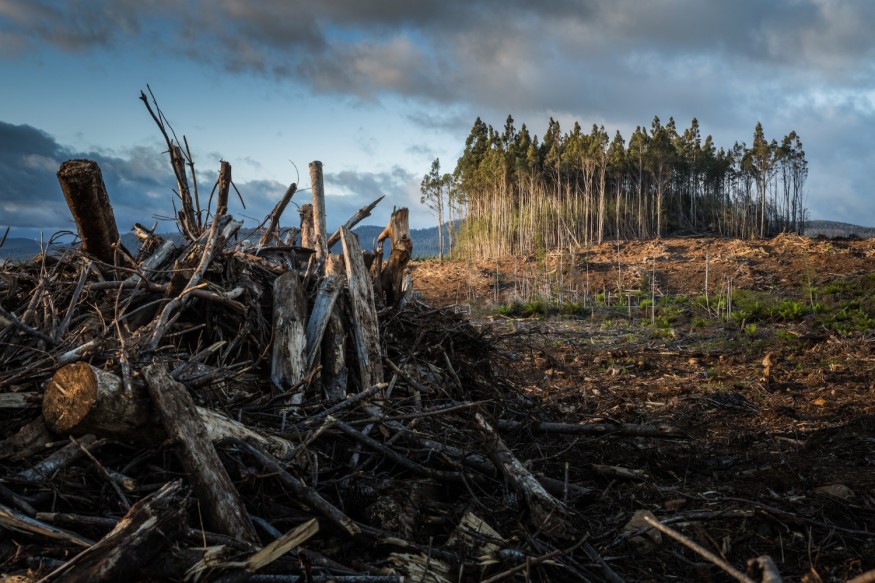
We live in strange times. There have been more than a few dystopian movies made about a post-catastrophe world, people struggling to survive, and some band of heroes looking for a cure or possibly just hoping to survive. Whatever the case, many begin with a type of news-headline montage, showing the progression of the planet deteriorating, with warnings going unheeded until something breaks.
Be it drought, extreme weather, rising sea levels, the climate is damaged beyond repair and over the course of this news montage, we see that collectively the globe did not do enough to prevent it. Well, we are creating that montage right now, and the news headlines are starting to match up with the movies more and more every day.
We are now used to seeing news stories about extreme rainfall, melting ice sheets, and even underwater "heat waves". Most people had never heard of an "atmospheric river" a year ago, and now it is in common usage in places like California (along with every other climate-driven natural disaster, from droughts to wildfires, from tornadoes to floods). We see what is happening, and while the majority of the population are very concerned about this and want to see change, not everyone does.
Somehow, there is a certain amount of the population around the globe that either does not believe that climate change is real, or they do see it but are profiting on some of the root causes.
When one is benefiting so greatly from something that harms everyone, it can create a conflict of interest and a crisis of morality. And because the effects of climate change are only now starting to hit with force, it has been easy to either ignore the data or blame the effects on something else.
The level of extreme weather continues to increase however, and not at a linear rate. The acceleration of these unusual weather events are rising exponentially, meaning the next year might contain the same amount of weather-related damage as the previous five.
In this difficult spot, however, lies a ray of hope. While the efforts to turn climate change around are enormous, we can at least work to get everyone on the same page. For those people who doubt climate change effects, we now have freely available data that anyone can pull, analyze, and see the effects of climate change for their own home city.
The other side of this are those who personally profit from activities that cause climate change. For this group, we can use this same data and show that climate change has a growing, sometimes devastating impact on businesses themselves.
The Data Is There, Wherever You Live
So now that this challenge has been cast, how do people access it and what can they do with it? For background, weather data is collected from a large number of sensors across ground sensors, weather balloons, and even satellites.
Collectively, this data gives vast amounts of raw data, which can be used to gain detailed insights on weather history patterns, and forecasts. The data is accessible through a weather API, such as the interface provided by Tomorrow.io. Services like this allow anyone to create programs that can pull as much or as little data as they like, with elements such as precipitation, wind, temperature, and even extreme weather events. Users can select the location, date ranges, and the depth of data details they need.
Once this data is pulled, users can create just about any analysis they need. In the case of looking for climate change evidence, this can be as simple as taking the various elements and setting up basic trend analysis. What they see will generally be true no matter where they live: an increase in extreme weather events; an increase in average temperatures; harsh cycles of droughts and floods; and other unusual pattern changes to the weather.
What does this tell us? It shows that our climate is indeed changing. While that by itself doesn't prove that these changes are made by humans, the human-based trends (increases in carbon release, deforestation, etc.) make for a compelling correlation. Playing the "What's more likely" game makes it very difficult at this point to refute the evidence.
For Those Who Know and Don't Care
For those who believe the facts around climate change but continue to drive their businesses with environmental abandon, simply looking at the data won't help. That said, someone in this category could pull the same API data, run the trend analysis, and see the results.
However, at this point it is critical to assess climate change not just on the fact that it's happening, but that it is negatively affecting businesses.
A great example of this is the in-depth work performed by the European Commission, showing the very real threats to businesses due to climate change. It shows how infrastructure and utilities are more often damaged today due to extreme weather; energy expenditures are higher not just because of warmer temperatures overall, but because of the higher number of extreme winter storms as well; raw materials for many products come from agriculture or forestry, both of which are at risk; and even insurance, as past data for insurance premium calculations is becoming less and less indicative of what to expect in the future.
Where We Go From Here
While it's shocking to see that in 2023 there are still parties that either deny or ignore climate change, the advances in technology, data science, and data democracy have given us an opportunity to get the raw data, see and analyze it ourselves, and make an informed decision around both climate change and what actions we can take while we still have a chance.
© 2025 NatureWorldNews.com All rights reserved. Do not reproduce without permission.





